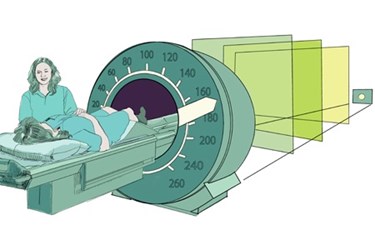Better Math Could Make Medical Diagnostics 6x Faster

A mathematical theory called compressed sensing (CS) could reduce the number of measuring points necessary to perform magnetic radiation (MR) imaging to one sixth of its present level. This discovery could conceivably reduce radiation exposure and allow clinicians to perform more tests per day, thus reducing healthcare costs.
Australian-born mathematician Terence Tao, who is currently a professor at UCLA, developed CS eight years ago, and Andreas Solbrå, a mathematician and physicist from the University of Oslo, is currently exploring its practical applications, reports Apollon Research Magazine.
According to an article in IEEE Signal Processing Magazine, “CS theory asserts that one can recover certain signals and images from far fewer samples or measurements than traditional methods use. To make this possible, CS relies on two principles: sparsity, which pertains to the signals of interest, and incoherence, which pertains to the sensing modality.”
Solbrå explains to Apollon: “Every measurement provides much more information than you think, provided you are smart about the sampling.”
The idea is to get the same amount of data using the fewest number of measurements possible. “Compressed sensing,” Solbrå continues, “will enable you to calculate all the things you don’t measure.”
The method could have a twofold advantage in the healthcare industry.
First, hospitals might be able to reduce the amount of radiation that a patient is exposed to while undergoing a quicker test. Apollon notes that one computed tomography (CT) scan can expose a patient to the same amount of radiation that he or she would encounter living for ten years in the environment.
In 2010, the FDA’s Center for Devices and Radiological Health launched an initiative and held a conference to discuss the best ways to reduce unnecessary radiation exposure from medical imaging.
Their solutions included more judicious ordering and consideration of a patient’s previous exposure to clinical radiation. Also, experts discussed ways of reducing the dose of radiation per test while still obtaining good image quality.
Better mathematics could give doctors yet another tool for minimizing unnecessary risk.
Secondly, Solbrå explains that because the test can be performed six times faster, hospitals will be able to perform more tests without purchasing more expensive machinery or hiring additional staff.
Oliver Geier, an MR physicist at Oslo University Hospital Intervention Center, remarks to Apollon: “The socio-economic savings may be considerable if it is possible to reduce the time to carry out an examination to one-sixth of the present level.”
One drawback of the method is the amount of time the computer needs to complete its calculations. While traditional methods allow doctors to examine medical images immediately, the new process could leave them waiting for results.
Also, implementing new calibrations would require advanced knowledge of mathematics. However, Solbrå assures Apollon that once the machines have been reset, health service staff could proceed with testing without any additional mathematical skills.
The method has already been tested at the American Lucile Packard Children’s Hospital in Stanford, and achieved successful results. If widely implemented, the new method could revolutionize healthcare diagnostics.
Despite the method’s revolutionary potential, however, it remains relatively unknown.
Solbrå commented to Apollon, “Most hospitals will probably not have heard about it yet.”
Image Credit: Illustration, Knut Løvås
